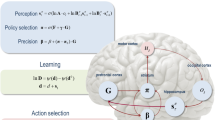Abstract
The Morse spectrum is a limit set of Lyapunov exponents of periodic pseudo-trajectories. This notion is especially important in the case where a dynamical system has infinitely many periodic trajectories of large period. A method for estimating the Morse spectrum was suggested by the first author in J. Math. Anal. Appl., 252 (2000). This method is based on ideas of symbolic dynamics which reduces the study of a dynamical system to the study of a certain graph, called a symbolic image. Within the framework of this method, the computation of the Morse spectrum is connected with searching simple closed paths and extracting contours with suitable characteristics. However, under iterations of the symbolic image, the number of such paths sharply increases, which leads to huge expenses of memory and time. We suggest an algorithm for constructing contours with the maximal and minimal mean values. This algorithm is based on a special version of the simplex method. Numerical tests are also described. Bibliography: 13 titles. Illustrations: 3 figures.
Similar content being viewed by others
References
G. Osipenko, “Spectrum of a Dynamical System and Applied Symbolic Dynamics”, J. Math. Anal. Appl. 252 (2000), 587–616.
I. V. Romanovskii J. V. Romanovsky, “Optimization and stationary control of discrete deterministic process in dynamic programming,” Kibernetika [in Russian], 2 (1967), 66–78; Engl. transl.: Cybernetics, 3 (1967).
F. Colonius and W. Klieman, The Morse spectrum of linear flows on vector bundles, Inst. Math. Ausburg Univ., Rep. No. 503 (1994).
G. S. Osipenko, “Verification of transversality by methods of symbolic dynamics,” Differ. Uravn. [in Russian], 26 (1990), No. 9, 1126–1132.
R. Sacker and G. Sell, “Existence of dichotomies and invariant splitting for linear differential systems I-III”, J. Diff. Eq., 15 (1974), No. 3, 429–458; 22 (1976), No. 2, 476–522.
R. Sacker and G. Sell, “A spectral theory for liner differential systems”, J. Diff. Eq., 27 (1978), No. 3, 320–358.
D. Salamon and E. Zehnder, “Flows on vector bundles and hyperbolic sets,” Trans. Amer. Math. Soc., 306 (1988), No. 2, 623–649.
G. Sell, “Nonautonomous differential equations and topological dynamics”, Trans. Am. Math. Soc., 127 (1967), 241–283.
G. S. Osipenko, “The periodic points and symbolic dynamics,” In: Seminar on Dynamical Systems, Birkhauser Verlag, Basel (1993), pp. 261–267.
S. Pissanetzky, Sparse Matrix Technology, New York, Academic Press (1984).
E. W. Dijkstra, “A note on two problems in connection with graphs”, Numer. Math., 1 (1959), 269–271.
B. Yu. Levit and V. N. Livshits, Nonlinear Network Transport Problems, M., Transport (1972).
G. S. Osipenko, “Estimating characteristic exponents by methods of symbolic dynamics,” Differ. Uravn. [in Russian], 38 (2002), No. 4, 460–470; English transl.: Differ. Equ., 38 (2002), No.4, 478–489.
Rights and permissions
About this article
Cite this article
Osipenko, G.S., Romanovsky, J.V., Ampilova, N.B. et al. Computation of the Morse Spectrum. Journal of Mathematical Sciences 120, 1155–1166 (2004). https://doi.org/10.1023/B:JOTH.0000014844.96239.dc
Issue Date:
DOI: https://doi.org/10.1023/B:JOTH.0000014844.96239.dc




